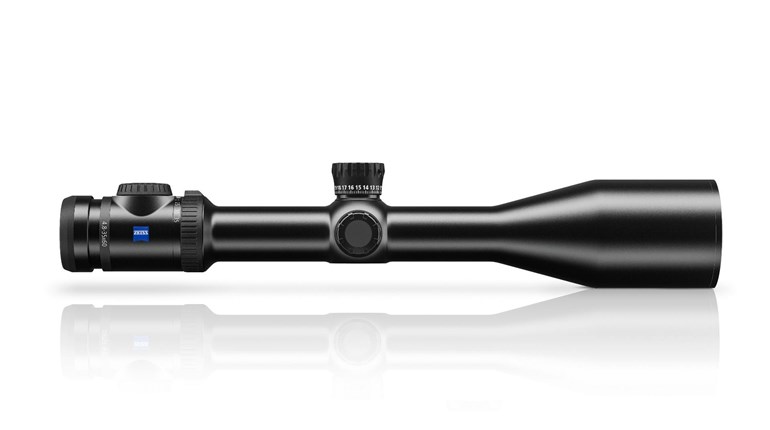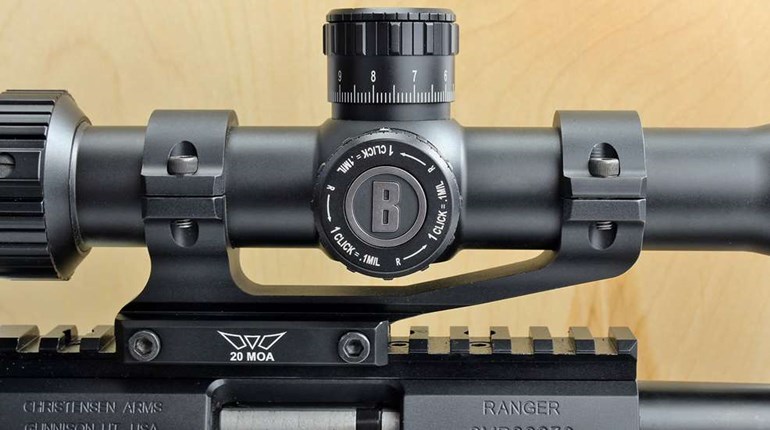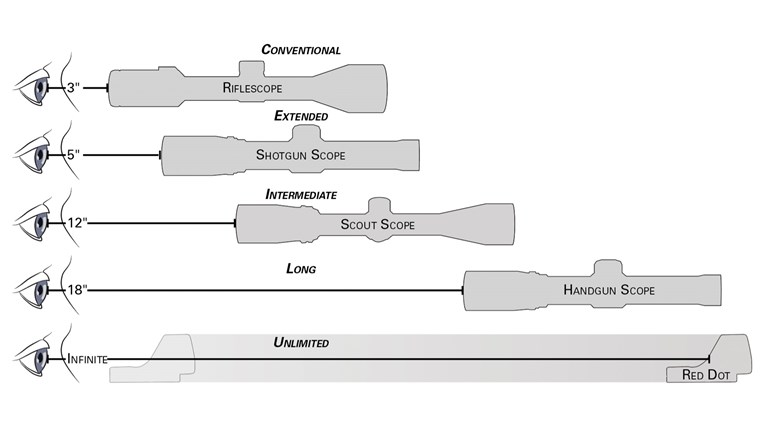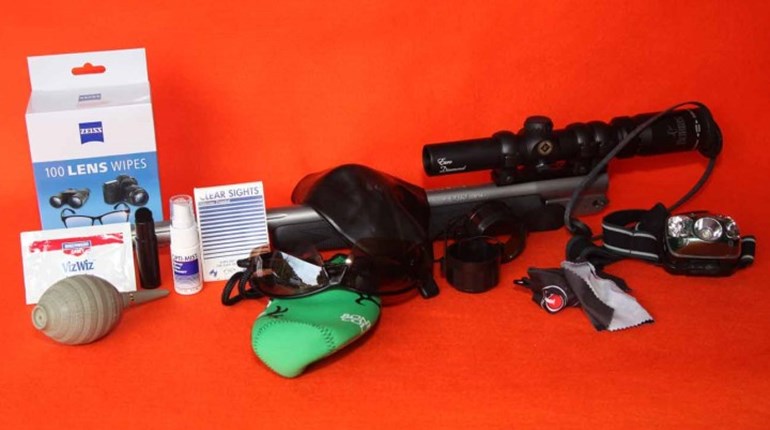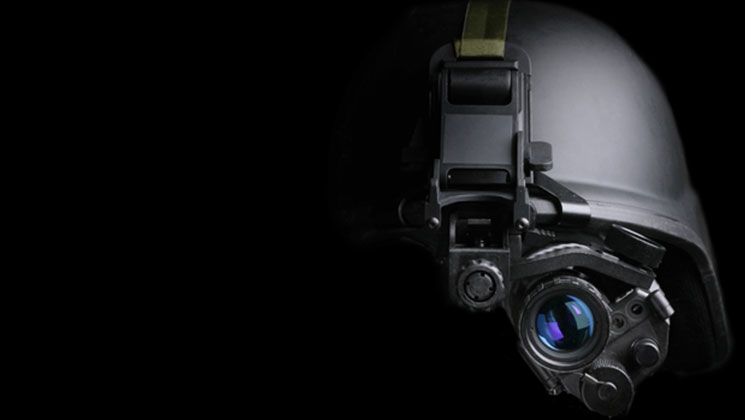
War is full of unspeakable horrors, but throughout the history of mankind’s quest for armed victory, societies have benefitted from many battlefield technologies. Prior to Sept. 11, things like clot-inducing wound dressings, global video chat and accurate, bird’s-eye-view computer mapping were either nonexistent or in need of much refinement. Today you can buy QuikClot bandages at sporting-goods stores, parents “visit” their children from afar using Skype, and smart phones have mapping applications that rival those used by intelligence agencies—all thanks to battlefield development.
The same is true in the world of night vision. What was once the domain of military aviators, small-unit leaders and Special Operations Forces is now available to hikers, boaters, hunters and home defenders in the form of more affordable and practical night-vision devices (NVDs).
There is no doubt NVDs greatly multiply our 24-hour capabilities, but even though many units are within reach of most consumers, they still represent a sizeable investment. It pays to have a good understanding of how the technology works and how you can best use it to your benefit before making a purchase.
The Basics
NVDs generally fall into one of three categories: optical, digital or thermal. Optical enhancement—specifically image-intensified (I²)—devices are the most commonly used today and are the main focus here. The light-amplification technology employed by modern I² devices uses small amounts of ambient light and converts it from light energy (photons) into electrical energy (electrons). These electrons pass into an image-intensifier tube and through a thin disk that contains millions of micro channels. As the electrons travel through and strike the channel walls, thousands more electrons are released. These multiplied electrons then bounce off of a phosphor screen, which converts the electrons back into photons. We see those photons as brighter, clearer images than our unaided eyes allow.
Digital night vision is a new segment of the market and offers some very attractive pricing. At present, the quality is not on par with I². One problem is the digital images’ slow refresh rate makes real-time viewing of the environment while moving or scanning a wide area very difficult.

Thermal NVDs detect light in the form of infrared heat signatures and convert it into extremely detailed images. These units are unaffected by camouflage, a lack of ambient light, smoke or other visible screening of warm objects. They cannot “see” through glass, but they are extremely effective in most cases. Thermal sights helped me many times on the two-way rifle range and are an exceptional tool—if you have deep pockets. Current pricing on thermal devices begins around $2,000 for noncooled units and climbs quickly to many tens of thousands of dollars for cooled units, with a concurrent rise in quality and capabilities.
A fourth category could include fusion devices that pair I² and thermal capabilities in the same optic, like Morovision’s AN/PSQ-20 Dual Sensor monocular. Though fusion technology is relatively new and continually being refined, it is optimal for seeing warm bodies in the widest variety of conditions. Of course, the pairing of two expensive technologies makes for doubly expensive devices.
I² NVDs are classified by generations of development. Generation 1 (Gen 1) devices made an appearance in the 1960s, and subsequent improvements have widened the options to include Gen 2, 3 and 3+ units (see sidebar). All are available commercially as riflescopes, monoculars, binoculars and goggles, with price increasing by generation.
Before You Buy
Law enforcement professionals provide NVDs to their snipers and tactical teams for the same reasons our military personnel employ them. Search-and-rescue teams use night vision to find missing people in perilous environments. Night hunters aiming for predators and wild pigs use NVDs to great advantage. On the flipside, when inexpensive Gen 1 NVDs began filtering into the commercial marketplace in the 1990s, military formations recognized even unsophisticated enemy forces could obtain them. We no longer had the night all to ourselves, and it changed the manner in which we operated.
NVDs can be useful in a variety of applications, including home defense. Before you tap the family stash of pre-1933 gold coins to purchase one, though, you must decide how it will be used in order to select the right type for your needs. Different versions of these electro-optical wonders can be worn on the face, mounted behind or in front of a day optic, or used alone as a scope dedicated to night use only. Your specific firearm setup, needs and budget will guide the decision-making process.
Look closely at a device’s specifications before buying it. Retired SOF operator and night-vision expert Derek Neathery stresses image quality is dictated more by signal-to-noise ratio (SNL) and line pairs per millimeter (lp/mm) than by the specific generation classification. He says good-quality tubes will have an SNL of 25 to 28, and a line pair measurement of 64 to 72 lp/mm.
Finally, be wary of cut-rate prices or any NVD being sold on the secondary market through ads or on auction sites. The manufacturer’s warranty may not transfer or may be expired. Buy from reputable sources, and consider any NVD with military markings or papers of origin to be stolen.

Head On
NVDs mount to your body or your gun. Each option has its ups and downs. Head-mounted monoculars and goggles rule whenever high situational awareness is critical, since these options allow the best wide-area observation. No magnification is involved, and the device follows your head you look around.
The downsides are eye and neck fatigue, headaches and the need for a separate way to aim your firearm. The usual aiming solution is to mount and zero an infrared (IR) laser to your rifle or carbine. Class 1 IR lasers are available to civilians and can provide accurate aiming out to approximately 200 yards in good conditions. This method is not suitable for precision work, but minute-of-vitals accuracy is very possible.
Wearing an NVD requires use of either a harness or helmet. The latter method is more stable and comfortable for long-term wear. Adapters that permit mounting NVD monoculars and goggles are available for both ballistic and lightweight impact helmets. The helmet, adapter and IR laser do add cost to this option.
Get In Line
Mounting an NVD in line with a day optic is limited to the specific designs of each. A key benefit here is the NVD may be removed when the sun comes up to restore normal daytime functionality. Simple monoculars like the AN/PVS-14 are not designed to operate in front of a day scope without the use of a special adapter such as the Zero Lens from Black Optex. Military shooters have traditionally used a hard mount to attach the monocular behind the day sight. This method works well with short, forward-placed, red-dot or nonmagnified optics. However, the reduction in eye relief makes it awkward to use an NVD mounted behind a full-size riflescope.
For combining with a typical riflescope, a front-mounted NVD is better. Early front-mounted, sniper night optics like the AN/PVS-9 actually piggybacked on the day scope and were notorious for difficulty retaining zero. Front-mounted, inline NVDs replaced them during the early years of the War on Terror. I was issued a prototype in late 2001 and quickly appreciated its functionality overseas. Variations of these inline NVDs earned favor among SOF snipers and eventually became a standard-issue item. Forward-mounted devices tend to be much more expensive than rear-mounted or worn NVDs, but their performance is far superior for precision shooting and observation.

Guns set up for full-time use in the dark may benefit most from a dedicated night scope that remains on the rifle and functions without the need of a day optic. These NVDs employ their own reticles that are zeroed to the rifle and load like a standard daytime scope. Many night hunters and guides rely on this cost-effective, functional setup. The advent of offset, supplemental iron or red-dot sights allows such rifles to be used in daylight or during a close-range, white-light engagement at night.
Things are quickly moving forward in the world of NVDs. Small innovators like Black Optex and big guys like ITT Exelis are pushing night vision far beyond current capabilities. The good news is prices will continue to drop, but the bad news is today’s top-of-the-line systems will be relegated to second-rate status in a few years.
If you are in the market for an NVD, take the time to research and identify potential solutions, then look for the best specifications and warranty you can afford. Once you see your surroundings the way the kings of the animal world do, you will realize how blind you have been.












